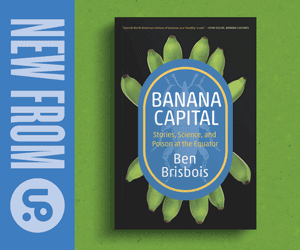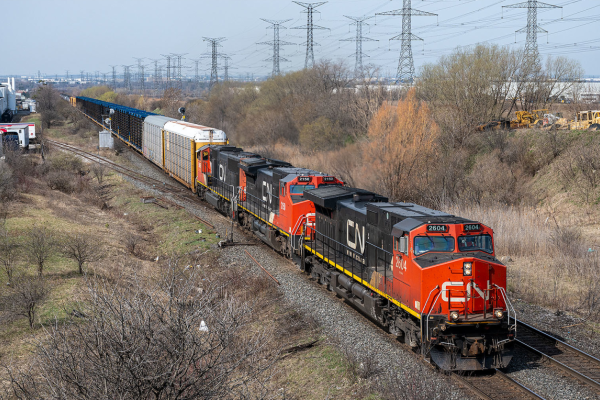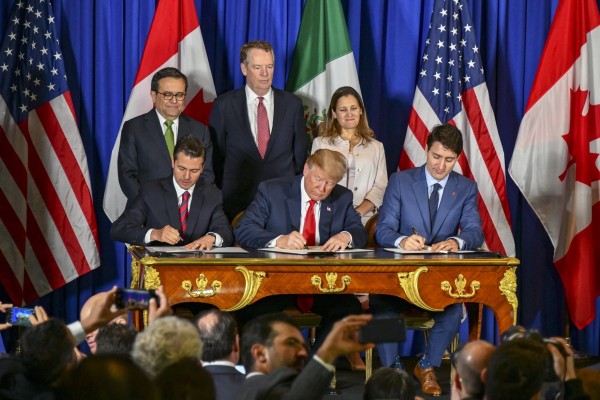Direction of post-COVID reconstruction at stake in federal election
The pandemic has necessitated a fundamental change in how we organize economic activity, jobs, and living standards

A street mural dedicated to frontline workers in Toronto by artist Gosia Komorski. Photo by Francesco Mariani/Flickr.
Canada’s economy experienced a tectonic shock during the COVID-19 pandemic and resulting recession. Public health orders shut down entire industries, and employment and GDP declined faster than any previous time in history, even the Great Depression of the 1930s.
The pandemic also sparked parallel tectonic shocks in economic policy. Governments around the world, of varying political stripes, intervened in enormous and unprecedented ways: using fiscal, monetary, and other policy levers. After decades of claiming budgetary constraints were immutable and binding, governments suddenly found trillions of dollars to spend on public health, emergency income supports, wage subsidies, infrastructure, and expanded public services. Deficits swelled to the biggest since the Second World War. And few are hurrying to reduce them—perhaps learning from Europe’s painful Great Recession in the 2010s, about the dangers of austerity.
Similarly, after decades of claiming central banks must focus only on controlling inflation, monetary policy was also upended. Central banks created vast quantities of new money—doing the same thing through public credit-creation as private banks do every day through their own for-profit lending. This strategy, called ‘quantitative easing’, could have been implemented more effectively: newly-created purchasing power would be more powerful if targeted at new productive activity, rather than flowing through private asset markets. But no one can deny that new vistas in monetary policy have been opened by this experience.
Canada was a leader in these dramatic policy turns. In fact, by many measures the policy response in Canada was among the most ambitious of any OECD economy. Income supports like the CERB were more generous, more broadly distributed, and longer-lasting than most other countries. The federal deficit was larger as a share of GDP (reaching over 15 percent) than most other countries. The Bank of Canada’s purchases, directly and indirectly, of federal and even provincial government bonds were also among the largest in the world—striking given the bank’s previous reluctance to use quantitative easing.
These extraordinary measures were condemned by a few partisans, but endorsed by most, even mainstream economists. Some employers complain the CERB (and its successors) undermined the ‘incentive’ for workers to work—at least in irregular, unpleasant, minimum wage jobs (that’s a good thing, actually). Conservative MP Pierre Poilievre railed about the government “printing money” and living off a national credit card. Right-wing rebels challenged the power of government to regulate and protect public health at all (Conservatives cynically court that constituency with their mixed messages on vaccines and other public health measures).
Every election entails partisan battles. However, before jumping head-first into the competition of party logos and personalities, progressives in Canada should pause to consider and appreciate the extent to which the battle of ideas shifted during the pandemic—and the opportunities this presents for a more transformative reorientation of policies and politics.
Since the pandemic, Canadians have learned that:
- Budget deficits are not a barrier to mobilizing public resources to protect people and communities.
- Money can be created through public credit mechanisms to pay for programs and investments.
- Expanded public programs (like the new national early child education plan) can spur economic growth and job creation, while enhancing quality of life.
- It is possible to provide every Canadian with a level of income support ($2,000 per month, as defined by the CERB) that genuinely meets basic needs for most. Poverty is thus a matter of choice and priority, not an economic inevitability.
Progressives should celebrate how dramatically economic policy changed during the pandemic, and the possibilities that opens for even bigger and more lasting changes. That hardly means endorsing the Liberal government which oversaw these changes (it was pressed by popular opinion and by the other parties in a minority Parliament). The goal is to evaluate how far the goalposts of common-sense political wisdom (the so-called ‘Overton window’) shifted during the pandemic—and then imagine what we can do, in this election and beyond, to keep it moving in the right direction.
The big shift in economic, budgetary, and social policies that occurred during the pandemic could be preserved and extended, if workers and social movements can mobilize enough pressure. Or it could be quickly reversed, if those who want a quick return to the pre-pandemic ‘normal’ have their way. This federal election will be an important marker of who has the upper hand in that struggle.
I have argued elsewhere that the pandemic necessitates a fundamental change in how we organize economic activity, jobs, and living standards (see my Policy Options article for a Canadian argument, and my joint article with Alison Pennington for similar arguments applied in Australia). The shock to incomes, confidence, and supply chains from the crisis are too severe to imagine a self-adjusting rebound in the normal drivers of capitalist growth (like business investment and exports). And the longer community contagion lasts (given new variants), the more far-fetched such a return to ‘normalcy’ will be. Not that we want that old ‘normal,’ anyway.
Instead, we should take a page from the national reconstruction that was undertaken after the Second World War—modernized to feature more attention to community well-being and environmental sustainability. Governments should spend more, not less, even after the battle against COVID has been (hopefully) won. Public investment in social and physical infrastructure will create good jobs and directly improve living standards. There must be a strong environmental dimension to reconstruction: including accelerated investments in green energy, public transit, energy conservation, clean-up, and climate change adaptation. Interventions to improve job quality, lift wages, and support hard-hit communities (including Indigenous and racialized Canadians, women, and youth) will ensure the gains of sustainable full-employment are broadly shared.
None of the major political parties are proposing a program with sufficient ambition and breadth to fully achieve this vision of post-COVID reconstruction. But there is an undeniable distinction between those that (to varying degrees) accept the new parameters of economic policy since COVID, and those that oppose them and want to return to conventional neoliberal practice as soon as possible. The Liberal, NDP, and Green parties are all advocating a further expansion in public programs, and continuing significant deficits. Cementing the national child care program (hard won through decades of struggle, but now threatened if the Conservatives win) surely tops the list. Their taxation, monetary, and environmental policies also move in the right direction. None of these parties can be blindly trusted to do the right thing if elected. But our opportunities to win better policies—on the strength of activism from below—will clearly be stronger, if the big changes in policy direction that occurred during the pandemic are maintained and extended.
On the other side, Conservatives and the People’s Party (are they rivals, or a tag team?) want to undo extraordinary pandemic policies and get back to neoliberal basics quickly. Both pledge to eliminate the deficit (in four years for Bernier, a decade for O’Toole). Both deride Bank of Canada money-creation, and would pressure the Bank of Canada to clamp down on credit. Both want to roll back human and caring services—starting by cancelling the child care plan—and both would reassert the leading role of private business and capital in shaping Canada’s future economic and social evolution.
Elections are just one element of the complex and continual struggles through which the shape of the economy and society are determined. The day-to-day fight of social movements, unions, and communities for decent work, equality, and sustainability are the only force that can ultimately win a better world. In the face of a horrific pandemic, doors were opened which made the prospect of building that better world somewhat more feasible. Progressives should make sure those doors aren’t now slammed shut during this election.
Jim Stanford is Economist and Director of the Centre for Future Work. He divides his time between Vancouver and Sydney, Australia.










